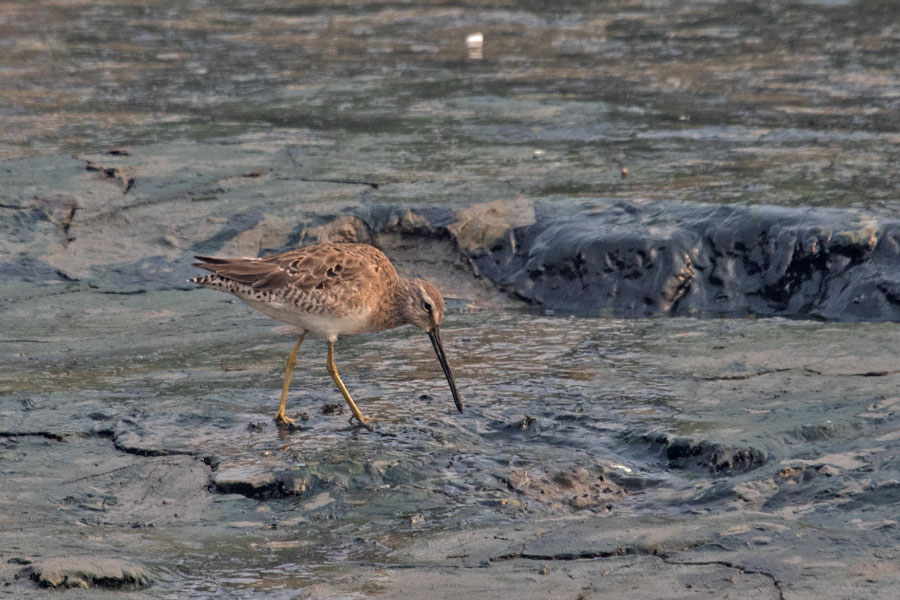 "
"
While I will not call myself an expert birder, I do love watching birds, and adding to my life list. My most recent addition, in 2018, is the Long-billed Dowitcher (Limnodromus scolopaceus) from Thane Creek, near the Bhandup Pumping Station in Mumbai. This bird is one of the recent additions to the bird list of India. The first confirmed sighting was from the Keoladeo National Park in Bharatpur, Rajasthan in 1997 by Paul Holt. Since then, the bird has been spotted and recorded from a handful of other localities in the states of Gujarat, Rajasthan and Haryana. The southernmost record is from Vadakkekad in Kerala in 2016.
In Thane Creek, the bird was spotted last year, marking its first record for Maharashtra. A solitary individual was spotted again in the same creek this year, foraging in its usual fashion while surrounded by hundreds of other waders and Northern Shovelers. While it is possible to confuse it with a Godwit if you are not an expert, it does have several distinct features that help tell it apart — an unmistakably long and straight black beak with green at its base, barred tail and flank, a white lower back and rump, and yellowish green legs. During the breeding season the males stand out with their reddish-orange under parts, but the wintering birds are grey in both sexes. Females are slightly larger than the males, and can be distinguished when seen together. The bird forages on the edge of the water, in murky grounds with action similar to a sewing machine, and feeds mainly on marine worms, small crustaceans, mollusks and insects in the intertidal zone. This species has also been recorded eating plants. Its scientific name, Limnodromus scolopaceus, is derived from the words “marsh racer” and “snipe like” respectively. The bird’s conservation status as per the IUCN is Least Concern (LC), owing to its very large range in the American and the European continent. It is a vagrant to the Indian Subcontinent and has been spotted and recorded by enthusiastic birders in the country since 1997.

 CI is a non-profit, non-commercial portal that aims to facilitate wildlife and nature conservation by providing reliable information and the tools needed to campaign effectively.
CI is a non-profit, non-commercial portal that aims to facilitate wildlife and nature conservation by providing reliable information and the tools needed to campaign effectively.



Chosen as 'Picture of the Week'
The Long-billed Dowitcher is a vagrant to the Indian Subcontinent and has been spotted and recorded by birders in the country since 1997.